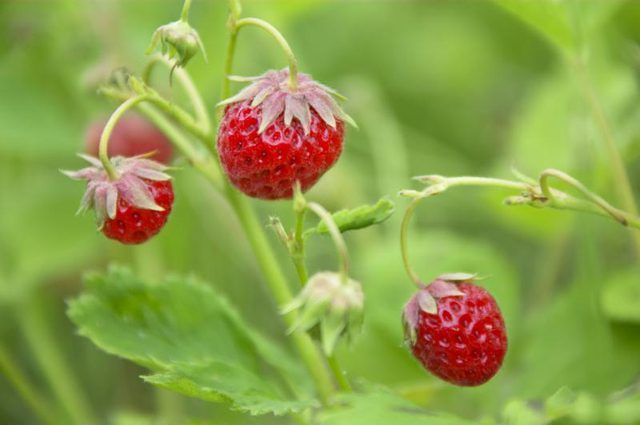Bulbs
Flower Basics
Flower Beds & Specialty Gardens
Flower Garden
Garden Furniture
Garden Gnomes
Garden Seeds
Garden Sheds
Garden Statues
Garden Tools & Supplies
Gardening Basics
Green & Organic
Groundcovers & Vines
Growing Annuals
Growing Basil
Growing Beans
Growing Berries
Growing Blueberries
Growing Cactus
Growing Corn
Growing Cotton
Growing Edibles
Growing Flowers
Growing Garlic
Growing Grapes
Growing Grass
Growing Herbs
Growing Jasmine
Growing Mint
Growing Mushrooms
Orchids
Growing Peanuts
Growing Perennials
Growing Plants
Growing Rosemary
Growing Roses
Growing Strawberries
Growing Sunflowers
Growing Thyme
Growing Tomatoes
Growing Tulips
Growing Vegetables
Herb Basics
Herb Garden
Indoor Growing
Landscaping Basics
Landscaping Patios
Landscaping Plants
Landscaping Shrubs
Landscaping Trees
Landscaping Walks & Pathways
Lawn Basics
Lawn Maintenance
Lawn Mowers
Lawn Ornaments
Lawn Planting
Lawn Tools
Outdoor Growing
Overall Landscape Planning
Pests, Weeds & Problems
Plant Basics
Rock Garden
Rose Garden
Shrubs
Soil
Specialty Gardens
Trees
Vegetable Garden
Yard Maintenance
How Do Strawberry Plants Reproduce?
How Do Strawberry Plants Reproduce?. When it comes to raising strawberries (Fragaria spp.), several species and many varieties are available, many with distinctive flavors and varying degrees of sweetness. Most garden plants are hybrids (Fragaria x ananassa) that came from crossing a North American strawberry (Fragaria virginiana) with a South...

When it comes to raising strawberries (Fragaria spp.), several species and many varieties are available, many with distinctive flavors and varying degrees of sweetness. Most garden plants are hybrids (Fragaria x ananassa) that came from crossing a North American strawberry (Fragaria virginiana) with a South American species (Fragaria chiloensis). The usual way of reproducing hybrid garden strawberry varieties is by rooting parts of the mother plant so you get an exact duplicate. If you grow hybrids from seed, they won't resemble parent plants.
Strawberry Distribution
Strawberries are perennial plants that live on from year to year. Garden strawberries are hardy in U.S. Department of Agriculture plant hardiness zones 2 through 11, depending on the cultivar. While no one cultivar grows in all zones, you can choose one adapted for your area. In addition to cultivated plants, wild species of strawberries occur in different parts of the world. They have smaller but reputedly richer-tasting fruit than hybrid plants.
Strawberry Plants
Strawberries are low-growing plants with growth arising from a central crown that connects the stems to the roots. The crown produces leaf stems tipped with three leaflets as well as flower stems that bear clusters of white, five-petaled flowers. After pollination by honeybees, green to whitish young strawberries form, ripening in about 30 days. Many varieties produce runners after they bear fruit. These are long, stem-like growths from the crown that can go as far as several feet from the mother plant. They form a new plantlet at the end of the runner, which roots to form a new strawberry plant.
Reproduction from Runners
You can simply dig up and transplant the rooted plantlets at the end of the runners, severing the connection to the mother plant before digging. Take as much soil as you can with the root system. Transplant the new strawberry plant to its permanent garden location or to a pot that has drainage holes. Or you can set a 4-inch container with holes filled with potting soil on the ground under the plantlet before it forms roots, allowing it to root into the pot. Then cut the runner and remove the pot with the rooted plantlet.
Crown Division
Some varieties of strawberries produce few or no runners, so the best way to reproduce them is by crown division. An example is everbearing "Loran," hardy in USDA zones 5 through 8. Time crown division for early spring just as new growth is beginning.
Dig up a strawberry plant with a large crown and shake off the extra soil. Clean a sharp knife by dipping it in rubbing alcohol. Cut the clump into two halves and then into smaller pieces. Divisions should contain at least five to 10 roots and be at least 1/2 inch in diameter and 1/2 inch long with several leaves or leaf buds on the crown's surface. Immediately transplant the divisions into the garden bed, taking care not to bury the crowns more deeply than their original level. Water them well.
Strawberry Seeds
Those oval, flat structures on the surface of the strawberry that crunch when you eat the fruit are the seeds. The fruit is built for dispersal by animals that eat the fruit, digest the flesh and pass the seeds through their digestive systems. The conspicuous, brightly colored fruits dangle at the ends of flowering stems, an easy target for birds and other small wildlife. Wild species of strawberries such as alpine strawberry (Fragaria vesca "Semperflorens") grow true from seed. Hardy in USDA zones 4 through 8, this everbearing European native produces fruit from spring to fall.
Growing From Seed
In late winter or early spring, sow seeds evenly in a clean nursery tray with drainage holes filled with soilless potting mix. Cover seeds with a fine layer of sand. Water the tray from the bottom by placing it in a container of water until the mix is evenly moist. Put the flat in a clear plastic bag in an area of bright light indoors or in a greenhouse and keep the mix moist but not soggy. It may take up to a month for seeds to germinate. When seedlings have several sets of true leaves, transplant each seedling to a 3-inch pot with drainage holes, using the soilless mix.
Strawberry Life Cycle and Fruit Bearing
In cold-winter areas, plants die back in winter and regrow in spring. In climates with mild winters, plants remain evergreen but stop growing in colder months. Cultivars differ in how they bear fruit. June bearing types produce fruit mainly in spring and early summer. Everbearing strawberries produce fruits from spring into fall. Day-neutral cultivars bear fruit whenever temperatures are between 35 and 85 degrees Fahrenheit.